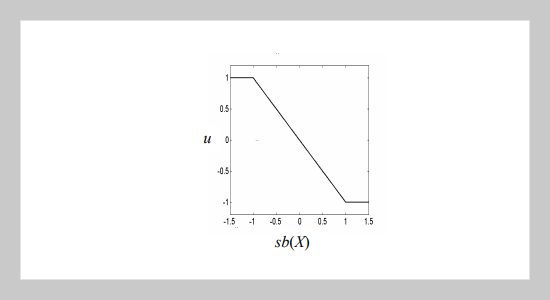REFERENCES
- [1] Davis, L. (Ed.), Handbook of Genetic Algorithms, Van Nostrand Reinhold, New York, U. S. A. (1991).
- [2] Goldberg, D. E., Genetic Algorithms in Search, Optimization, and Machine Learning, Reading, Addison-Wesley, Reading, MA, U. S. A. (1989).
- [3] Hwang, G. C. and Lin, S. C., “A stability approach to fuzzy control design for nonlinear systems,” Fuzzy Sets and Systems, Vol. 48, pp. 279-287 (1992).
- [4] Itkis, U., Control system of variable structure, Wiely, New York, U. S. A. (1976).
- [5] Jang, J. S., “Self-learning fuzzy controllers based on temporal back propagation,” IEEE Trans. on Neural Networks, Vol. 3, pp. 714-723 (1992).
- [6] Kim, S. W. and Lee, J. J., “Design of a fuzzy controller with fuzzy sliding surface,” Fuzzy Sets and Systems, Vol. 71, pp. 359-367 (1995).
- [7] Lee, C. C., “Fuzzy logic in control systems: fuzzy logic controller-part I and II,” IEEE Trans. on Systems, Man, and Cybernetics, Vol. 20, pp. 404-435 (1990).
- [8] Lee, M. A. and Takagi, H.,” Integrating design stages of fuzzy systems using genetic algorithms,” Proc. of 2nd IEEE Int. Conf. on Fuzzy Systems, pp. 612-617 (1993).
- [9] Lin, S. C. and Chen, Y. Y., “Design of adaptive fuzzy sliding mode for nonlinear system control,” Proc. of Third IEEE Int. Conf. on Fuzzy Systems, pp. 35-39 (1994).
- [10] Lin, S. C. and Kung, C. C., “The fuzzy sliding mode controller,” Proc. of the 15th Nat. Sym. on Automatic Control, pp. 359-366 (1992).
- [11] Morgan, R. G. and Ozguner, U., “A decentralized variable structure control algorithm for robotic manipulators,” IEEE J. of Robotics and Automation, RA-1, pp. 57-65 (1985).
- [12] Palm, R., “Robust control by fuzzy sliding mode,” Automatica, Vol. 30, pp. 1429-1437 (1994).
- [13] Slotine, J. J., “Sliding controller design for non-linear systems,” Int. J. of Control, Vol. 40, pp. 421-434 (1984).
- [14] Tamal, Y., Akhmetov, D. and Dote, Y., “Novel fuzzy-neural network with general parameter learning applied to sliding mode control systems,” Proc. of IEEE Int. Conf. on Systems, Man, and Cybernetics, Vol. 1, pp. 376-379 (1999).
- [15] Utkin, V. I., Sliding Modes and Their Application in Variable Structure Systems, MIR, Moscow (1978).
- [16] Wang, W. J. and Lee, J. L., “Hitting time reduction and chattering attenuation in variable structure systems,” J. of Control Systems and Technology, Vol. 1, pp. 19-25 (1993).
- [17] Wong, C. C. and Feng, S. M., “ Switchingtype fuzzy controller design by genetic algorithms,” Fuzzy Sets and Systems, Vol. 74, pp. 175-185 (1995).
- [18] Wong, L. K., Leung, F. H. F. and Tam, P. K. S., “Combination of sliding mode controller and PI controller using fuzzy logic controller,” Proc. of IEEE Int. Conf. on Fuzzy Systems, Vol. 1, pp. 296-301 (1998).
- [19] Yeung, K. S. and Chen, Y. P., “A new controller design for manipulators using the theory of variable structure systems,” IEEE Trans. on Automatic Control, AC-33, pp. 200-206 (1988).
- [20] Zhang, D. Q. and Panda, S. K., “Chatteringfree and fast-response sliding mode controller,” IEEE Proc. on Control Theory and Applications, Vol. 146, pp. 171-177 (1999).
















